Hovhannavank is an Armenian monastic complex in Aragatsotn province, Ohanavan village. It is located on the right side of the canyon of Kasagh river. The monastery is devoted to Hovhannes Mkrtich. In different sources, we can meet different names of the monastery. Examples are
Anavank, St Iohan Monastery, Hanavank, Havanavank, Hovanavank, Hovhanni Monastery, Hovhanadesert, Hovhanavan priory. Also, we can see Hovhanavank, St Hovhannes, St Hovhanni Karapet Monastery, Hovhanni Monastery, Syughi Monastery, Sov Monastery, Sugh Monastery, Ohanavank.
The Names of Hovhannavank
As I mentioned before Hovhannavank has had many names. Now, going back to the old ages, we will find out the reason of having different names.
The monastery was built in 4-13 centuries. The tradition, however, attributes the establishment to Grigor Lusavorich (in 3-4 centuries). At the beginning, the name of Hovhannavank was Syugh or Sov Monastery, but people called it Hannavank.
The last name, Hovhannavank came from Hovhan, who was a guide of the monastery. According to Arakel Davrizhetsi Ghazar Parpetsi had ordained him to be the guide of the monastery instead of him.
The oldest building of the monastery is St Karapet Bazilik type church. Grigor Lusavorich established this church in the beginning of the fourth century.
Vache I Vachutyan, who was partial commander of Ararat Partiality, established the central-domed Catholic church, in 1216-1221. His wife Mamakhatun was the one who helped him to establish the church.
The History and New Lithographies
Hovhannavank was one of the most remarkable religious centers of Armenia in middle ages. The diocesan jurisdiction was spread not only on Nig, Amberd, Aragatsotn provinces. It was also spread on Shirak province. According to the holy tradition, Grigor Lusavorich established the church. He brought the remains of Hovhannes Mkrtich and buried there building St Karapet bazilik type church.
Choosing the area for building the church with the name of Hovhannes Mkrtich wasn’t unintentional. Those sides of the country people had a water worship and there was a need that they would connect their feeling to the new church, giving to it Christian conception. It’s interesting that till now many pilgrims go to this church on Vardavar.
Before, Cenobites had a very ascetic behavior. The temperance was their companion whole day long. Religious people living in the monastery didn’t eat for a long time, this is why another name was Monastery of Sov or Sugh ( Armenian word sov means “hunger”).
Karo Ghafadaryan wrote the “Hovhannavank and its inscriptions” work. The remarkable archaeologist comprehensively explored and examined the group of the monuments, which helped him to write this work.
The author analyzed architectural, archaeological, historical subjects of the group of monuments. He introduced the inscriptions of Hovhannavank and everything around it.
Zaqaria Sarkavag Qanaqertsi was the first historian, who collected the inscriptions in the seventh century. Bishop Shahkhatunyants, Alishan, and Kostanyants used his inscriptions while collecting new ones. Regrettably, the amount and quality of the inscriptions were not enough to reflect the lithographical heritage of Hovhannavank. Though some of them are irreplaceable as some inscriptions disappeared because of the disasters.
Ghafadaryan finally solved the problem of collecting the whole inscriptions of Hovhannavank.
About the Manuscript of Hovhannavank
A considerable amount of the manuscripts of the middle ages don’t have a date. We don’t know about the place, author, receiver and other people who took part in creating manuscripts.
The poorness of manuscripts of the springtime in clear. They came through many ages and the manuscripts had some damages, but each of them is a valuable remain from Armenian ancient educational and religious centers, so their research historians consider an important problem.
As you already know about the history of Armenian ancient manuscripts, it’s quite a remarkable one of them. This manuscript has a name of Charentir of Hovhannavank, as the author wrote in Hovhannavank.
The Structure of the Manuscript
The cover is probably modern to the manuscript. It has a brown leather, the kernel is a 1.5 centimeters thick board, the lining is a blue and yellow layers velvet.
An inscription
On the center of the north wall of Hovhannavank, you can find an eighteenth-century inscription, that reports a notable information about the receiver of Charentir (Ճառընտիր). From this inscription, we know about Ruben priest. He is the receiver of the inscription. His priest-pupil Mkhitar devoted his garden to Hovhannavank after Ruben’s death in the eighteenth century.
After Ruben Priest’s death, he left his Charentir to Hovhannavank, where Zakaria Qanaqertsi found it in a bad condition. For renovating the Charentir, Zaqaria used two other, probably old manuscripts.
An Information about the Completeness of the Manuscript
The beginning of the manuscript is harmless. The first subject starts with a trimming and there is “Ա” in the corner. It is different at the end. Zakaria renovated it, but at the end, he couldn’t make it perfect.
However, the Charentir’s writing date goes back to the 1165-1185, Hovhannavank. The writer was Hovhannes. Ruben monk priest ordered him to write. The writer had some assistants, who were probably his pupils.
The manuscript has a big value, and it proves the fact that Hovhannavank had a monastic school where productive writing activities were going on.
If You Decided to Visit Hovhannavank
So if you decided to visit Hovhannavank you may want to have some advice how to arrange your tour. Here are good places to visit on your way to Hovhannavank.
Ohanavan
This is a village in Aragatsotn province, and it lies on the shore Kasagh river. As I mentioned above Hovhannavank is in this village. If you are going to visit Hovhannavank, then visit Ohanavan village too.
Population
The population is mainly busy with cattle, gardening, tillering.
Kasagh Gorge
This is a river which has 89 km length.
It has two little outfalls. One of the starts from Aragats, another starts from Pambak.
The most abundant confluent is Amberd. Amberd streams by a deep canyon. Due to the periodic downfalls, it overflows and sometimes swoons.


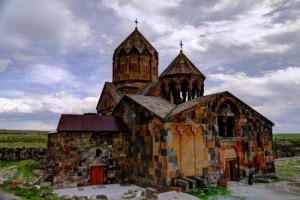
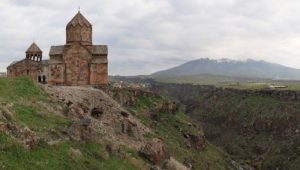
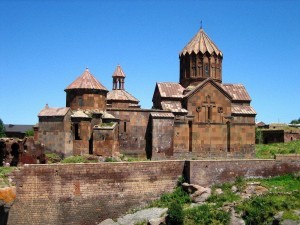
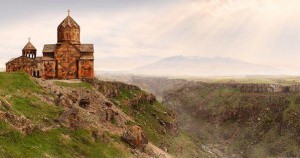

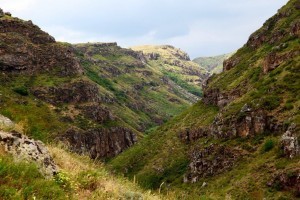





Leave a Comment